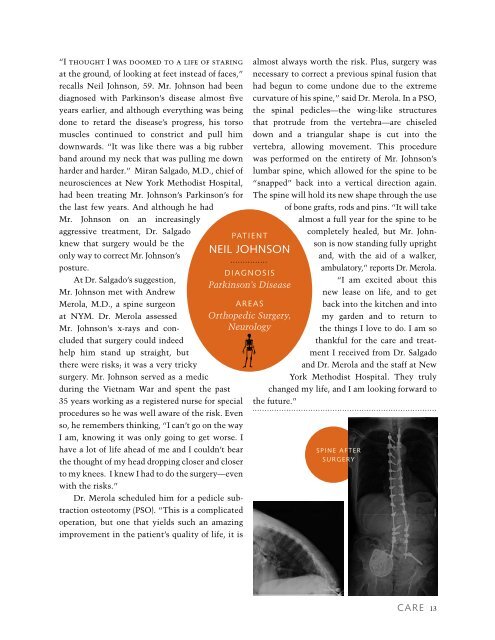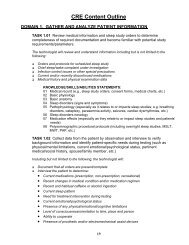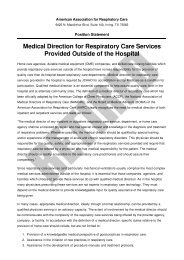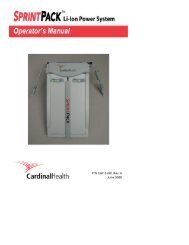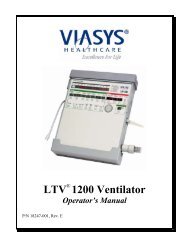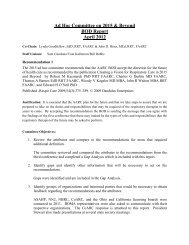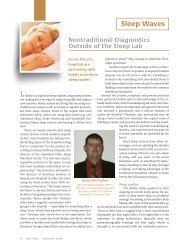this article - AARC.org
this article - AARC.org
this article - AARC.org
- No tags were found...
Create successful ePaper yourself
Turn your PDF publications into a flip-book with our unique Google optimized e-Paper software.
“I thought I was doomed to a life of staringat the ground, of looking at feet instead of faces,”recalls Neil Johnson, 59. Mr. Johnson had beendiagnosed with Parkinson’s disease almost fiveyears earlier, and although everything was beingdone to retard the disease’s progress, his torsomuscles continued to constrict and pull himdownwards. “It was like there was a big rubberband around my neck that was pulling me downharder and harder.” Miran Salgado, M.D., chief ofneurosciences at New York Methodist Hospital,had been treating Mr. Johnson’s Parkinson’s forthe last few years. And although he hadMr. Johnson on an increasinglyaggressive treatment, Dr. Salgadoknew that surgery would be theonly way to correct Mr. Johnson’sposture.At Dr. Salgado’s suggestion,Mr. Johnson met with AndrewMerola, M.D., a spine surgeonat NYM. Dr. Merola assessedMr. Johnson’s x-rays and concludedthat surgery could indeedhelp him stand up straight, butthere were risks; it was a very trickysurgery. Mr. Johnson served as a medicduring the Vietnam War and spent the past35 years working as a registered nurse for specialprocedures so he was well aware of the risk. Evenso, he remembers thinking, “I can’t go on the wayI am, knowing it was only going to get worse. Ihave a lot of life ahead of me and I couldn’t bearthe thought of my head dropping closer and closerto my knees. I knew I had to do the surgery—evenwith the risks.”Dr. Merola scheduled him for a pedicle subtractionosteotomy (PSO). “This is a complicatedoperation, but one that yields such an amazingimprovement in the patient’s quality of life, it ispatientNEIL JOHNSONdiagnosisParkinson’s DiseaseareasOrthopedic Surgery,Neurologyalmost always worth the risk. Plus, surgery wasnecessary to correct a previous spinal fusion thathad begun to come undone due to the extremecurvature of his spine,” said Dr. Merola. In a PSO,the spinal pedicles—the wing-like structuresthat protrude from the vertebra—are chiseleddown and a triangular shape is cut into thevertebra, allowing movement. This procedurewas performed on the entirety of Mr. Johnson’slumbar spine, which allowed for the spine to be“snapped” back into a vertical direction again.The spine will hold its new shape through the useof bone grafts, rods and pins. “It will takealmost a full year for the spine to becompletely healed, but Mr. Johnsonis now standing fully uprightand, with the aid of a walker,ambulatory,” reports Dr. Merola.“I am excited about <strong>this</strong>new lease on life, and to getback into the kitchen and intomy garden and to return tothe things I love to do. I am sothankful for the care and treatmentI received from Dr. Salgadoand Dr. Merola and the staff at NewYork Methodist Hospital. They trulychanged my life, and I am looking forward tothe future.”before sugeryspine aftersurgerycare13


